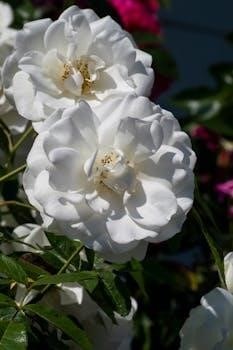
-
By:
- otis
- No comment
rudram pdf
Rudram⁚ An Overview

The term “Rudram” encompasses various aspects, from a powerful Vedic hymn dedicated to Lord Shiva, found in the Yajur Veda, to a series of Indian air-to-surface missiles․ It signifies a remover of sorrows, carrying deep spiritual and technological significance․ This multifaceted nature makes Rudram a subject of diverse study and application․
Rudram⁚ Meaning and Etymology
The word “Rudram” originates from Sanskrit, carrying a profound spiritual weight․ Its primary meaning is “remover of sorrows,” directly linking it to the deity Rudra, an ancient form of Lord Shiva․ Etymologically, “Rudra” is believed to be derived from the root “rud,” which signifies “to cry,” “to howl,” or “to roar,” suggesting a deity associated with powerful, sometimes destructive, forces․ This etymological connection underscores Rudra’s role as a force of both destruction and subsequent renewal, a concept central to Hindu cosmology․ “Rudram,” therefore, not only implies the act of removing suffering but also embodies the dynamic energy of transformation․ The term is thus imbued with a sense of both divine power and compassionate action․ This dual nature makes its meaning rich and complex, resonating deeply within the Vedic tradition and beyond․ Further, the name’s connection to the destructive and restorative aspects of the universe is fundamental to understanding its significance․
Rudram in Vedic Hymns
Rudram, particularly Sri Rudram, holds a prominent place within the Vedic hymns, specifically within the Yajur Veda․ This sacred hymn is dedicated to Lord Shiva and is revered for its powerful invocations and descriptions of the deity’s cosmic form․ The Vedic context of Rudram is characterized by its use in ritualistic chants and ceremonies, aimed at invoking blessings, seeking protection, and achieving spiritual purification․ The verses of Sri Rudram meticulously describe Shiva’s diverse attributes, encompassing both his benevolent and fearsome aspects․ This hymn is not merely a prayer but a profound exploration of the divine essence, employing rich imagery and metaphorical language․ The recitation of Rudram is considered a potent spiritual practice, believed to bestow both worldly and transcendental benefits․ It serves as a bridge connecting the devotee with the divine, offering a path towards self-realization and liberation․ The structure and cadence of the hymn contribute to its transformative power, further enhancing its importance within the Vedic tradition․ The ancient seers considered it a direct link to the divine․
Sri Rudram⁚ A Detailed Analysis
Sri Rudram, a pivotal hymn in the Yajur Veda, is a complex and layered composition warranting detailed analysis․ This hymn is not merely a collection of verses but a structured narrative that unfolds the multifaceted nature of Lord Shiva․ A detailed analysis reveals that Sri Rudram is divided into two primary sections, the Namakam and Chamakam, each with its unique purpose and structure․ The Namakam focuses on invoking and glorifying Shiva through numerous epithets and attributes, revealing his cosmic presence and power․ Each verse meticulously describes Shiva’s various forms and manifestations, creating a comprehensive portrait of the deity․ Conversely, the Chamakam is a supplication, seeking boons and blessings from Shiva․ It systematically lists the material and spiritual needs of the devotee, emphasizing the role of Shiva as a bestower of grace․ This detailed structure highlights the dual aspects of devotion⁚ glorification and supplication․ A thorough analysis shows the intricate symbolism and philosophical depth embedded within Sri Rudram, enhancing its spiritual significance․ The hymn’s power lies not only in its literal meaning but also in its capacity to evoke profound inner transformation․
Namakam and Chamakam
The Sri Rudram is distinctly structured into two complementary sections⁚ the Namakam and the Chamakam․ These are not merely divisions but rather different approaches to engaging with the divine․ The Namakam, the first part, is characterized by its focus on naming and describing the various aspects and manifestations of Lord Shiva․ Through a series of profound epithets, it unveils the cosmic form of Shiva, highlighting his omnipresence, omnipotence, and omniscience․ This part of the hymn is often described as a glorification of the divine, celebrating Shiva’s numerous attributes and powers․ Each verse of the Namakam serves to deepen the devotee’s understanding and appreciation of the deity․ Following the Namakam, the Chamakam serves a different purpose, focusing on seeking blessings and boons from Shiva․ This section is essentially a supplication, where the devotee asks for both material and spiritual well-being․ The Chamakam systematically lists what the devotee seeks, ranging from health and prosperity to spiritual enlightenment and liberation․ Together, the Namakam and Chamakam create a complete cycle of worship, moving from glorification to supplication, forming an integral part of the Sri Rudram․
Rudram as a Name⁚ Meaning and Origin
The name “Rudram,” beyond its association with the Vedic hymn and missile system, carries its own unique significance as a personal name․ Originating from Hindi, the name Rudram is predominantly used for males and is often interpreted to mean “lucky․” This meaning, however, is a simplified understanding and may not capture the full essence of the name’s deeper roots․ The name’s connection to the deity Rudra, a fierce aspect of Lord Shiva, suggests a more profound meaning tied to strength, power, and the ability to remove obstacles or sorrows․ Consequently, those named Rudram may be seen as possessing a strong character, wisdom, and a compassionate nature․ The numerological significance of the name further contributes to its understanding, adding layers of depth to its symbolic interpretation․ The name’s origin in Indian culture, and specifically its link to Vedic traditions, ensures that Rudram carries a sense of heritage, spirituality, and reverence․ In essence, choosing the name Rudram for a child is often considered an invocation of blessings and a hope for a life filled with positive attributes․
Rudram⁚ Gender and Cultural Context
Within the cultural context of India, “Rudram” is predominantly perceived and utilized as a masculine name․ This association stems from its strong link to Lord Rudra, a powerful and often fearsome male deity in Hinduism․ The name’s origin and traditional usage in Vedic scriptures further solidify its masculine connotation․ While the name may not be exclusively reserved for males, its cultural weight and historical precedence lean heavily towards its use for boys․ This is also reflected in the common understanding of the name as meaning “lucky,” an attribute often associated with male progeny in certain traditional contexts․ The cultural significance of Rudram also extends to its associations with strength and leadership․ Beyond its use as a name, the term “Rudram” within a cultural framework, particularly in its connection to the Vedic hymn Sri Rudram, is revered as a source of spiritual power and divine blessings․ This duality in the term, functioning both as a name and a sacred text, highlights its deep cultural resonance and its embodiment of both personal identity and spiritual heritage․ Therefore, the gendered use and cultural positioning of “Rudram” reflects its deeply rooted place within Indian society and religious traditions․
Rudram’s Character Traits

Individuals associated with the name “Rudram” are often perceived to possess a strong character, marked by inherent wisdom and a deep sense of compassion․ Intuition plays a significant role in their decision-making processes, allowing them to navigate complex situations with clarity and understanding․ They are often driven by high ideals, striving for excellence and aiming to make a positive impact on the world around them․ Honesty is a core value for those named Rudram, and they are known for their integrity and straightforwardness․ These individuals often possess a natural charm and are seen as “cute” and approachable, fostering positive relationships with others․ The name suggests an innate capacity for leadership, characterized by a balance of strength and empathy․ Their ability to connect with others on an emotional level, coupled with their intellectual prowess, allows them to inspire and motivate those around them․ The combination of wisdom, compassion, and high ideals makes them individuals who are not only admired but also trusted and respected․ Rudram’s character traits are a reflection of their strong internal moral compass, guiding them through life with integrity and purpose․ They often possess a quiet confidence that draws people to them, making them influential figures in their respective communities․
Rudram in Modern Applications
In contemporary times, the term “Rudram” has transcended its traditional spiritual context, finding applications in diverse fields, most notably in defense technology․ The name is famously associated with a series of air-to-surface ground attack and anti-radiation missiles developed by India’s Defence Research and Development Organisation (DRDO)․ This sophisticated missile system represents a significant advancement in India’s defense capabilities, showcasing the nation’s progress in aerospace engineering and missile technology․ Beyond defense, the essence of “Rudram” as a remover of sorrows has inspired the naming of establishments like the Rudram Hotel Yoga & Ayurveda Retreat, which seeks to offer solace and rejuvenation through ancient healing practices․ The name thus embodies both cutting-edge technology and timeless spiritual wisdom, illustrating its relevance in modern society․ Furthermore, the philosophical and spiritual teachings associated with the Rudram hymn continue to find application in yoga and meditation practices, providing a framework for inner peace and spiritual growth․ The use of the name “Rudram” in diverse contexts highlights its adaptability and enduring significance, bridging the gap between ancient traditions and modern advancements․ Its impact is felt in both the physical and metaphysical realms, highlighting its versatility and timeless appeal․
Rudram as an Indian Missile System
The “Rudram” missile system represents a significant leap in India’s indigenous defense capabilities․ Developed by the Defence Research and Development Organisation (DRDO), it is a series of air-to-surface ground attack and anti-radiation missiles․ These missiles are designed to neutralize enemy radar systems and other critical infrastructure, playing a crucial role in suppression of enemy air defenses․ The Rudram missile is a testament to India’s technological prowess in aerospace and missile engineering․ It showcases the nation’s commitment to self-reliance in defense production․ The missile’s development is a response to the evolving security landscape and is aimed at bolstering national defense․ It incorporates advanced guidance systems and is capable of engaging targets with high precision․ The system is a key component of India’s strategic arsenal, enhancing its ability to deter potential threats․ This modern application of the name “Rudram” underscores its association with strength and the ability to overcome challenges, mirroring the deity’s role as a remover of sorrows and obstacles․ The missile stands as a symbol of India’s technological advancement and its dedication to national security, highlighting a powerful manifestation of the name in the modern era․
Rudram Missile Development

The development of the Rudram missile system by India’s DRDO is a story of meticulous engineering and innovation․ This indigenous program aimed to produce a potent air-to-surface weapon, capable of striking enemy radar systems and other strategic targets․ The project involved overcoming numerous technological challenges, requiring the integration of advanced guidance, propulsion, and warhead technologies․ The Rudram missile is a complex system that incorporates elements like a high-speed airframe, a sophisticated seeker capable of detecting and locking onto radar emissions, and a powerful warhead designed to inflict maximum damage․ The development process included rigorous testing and validation to ensure the missile meets stringent performance and reliability standards․ The program is a reflection of India’s self-reliance policy in defense, reducing its dependence on foreign arms․ The Rudram’s journey from conceptualization to deployment is a testament to the skill of Indian scientists and engineers․ The missile’s advanced anti-radiation capability makes it a critical asset in modern warfare scenarios, enhancing the offensive and defensive capabilities of the Indian Air Force․ The successful development of Rudram is a significant milestone for India’s defense industry, underlining its growing capabilities in the global arena․
Rudram in Music and Performance
The sacred hymn, Sri Rudram, holds a prominent place in Indian music and performance traditions․ The chanting of Sri Rudram, often accompanied by traditional instruments, creates an atmosphere of deep reverence and spiritual upliftment․ The rhythmic patterns and melodic intonations of the hymn are designed to invoke a sense of tranquility and devotion, resonating with the listener’s inner self․ Performances of Sri Rudram are not merely musical recitations; they are considered a form of ritualistic practice, aiming to connect the individual with the divine․ The hymn’s powerful vibrations and poetic expressions have inspired numerous musical compositions and artistic renditions․ In various cultural events and festivals, Sri Rudram recitals are often featured as a central element, showcasing its timeless beauty and spiritual significance․ The performance of this hymn is often a collective experience, involving multiple participants and creating a harmonious synergy․ Moreover, the use of traditional attire and ritualistic gestures further enhances the experience, transforming it into a profound cultural expression․ The musical interpretations of Sri Rudram are a testament to its enduring appeal, reflecting its capacity to transcend time and cultural boundaries․ The hymn’s chanting continues to be a source of inspiration and solace, enriching the lives of countless individuals․
Rudram in Theatrical Productions

The concept of Rudram, with its rich spiritual and symbolic connotations, has found its way into various theatrical productions, offering a unique blend of tradition and artistic expression․ The powerful imagery associated with Rudra, the ancient form of Shiva, provides ample scope for dramatic interpretations, exploring themes of creation, destruction, and cosmic balance․ The theatrical adaptations of Rudram often incorporate elements of traditional Indian music, dance, and storytelling, creating a visually captivating and emotionally resonant experience․ These productions may depict scenes from Hindu mythology, where Rudra plays a significant role, or they may explore contemporary themes through the lens of ancient wisdom․ The use of elaborate costumes, stage designs, and lighting techniques enhances the dramatic impact of the performances, drawing the audience into the narrative․ Some theatrical interpretations may also feature the chanting of Sri Rudram as an integral part of the storyline, infusing the production with a sense of sacredness․ Moreover, the character of Rudra, with its complex and multifaceted nature, provides actors with challenging and rewarding roles, allowing for a wide range of emotional expression․ These productions serve not only as entertainment but also as a means of preserving and promoting cultural heritage․ Through innovative adaptations, Rudram continues to inspire and captivate audiences in the realm of theater․
Rudram Hotel and Retreat
The Rudram Hotel and Retreat, often located in serene and spiritually significant locations like Rishikesh, offers a unique experience that combines luxurious hospitality with the ancient wisdom of yoga and Ayurveda․ Such retreats are designed to provide guests with a holistic approach to wellness, incorporating elements of physical, mental, and spiritual rejuvenation․ The name “Rudram,” with its association with Lord Shiva, suggests a focus on inner transformation and the removal of obstacles․ Guests can typically expect comfortable accommodations, nutritious meals prepared with Ayurvedic principles in mind, and a range of wellness activities․ These activities might include daily yoga sessions, guided meditation, Ayurvedic consultations, and traditional healing therapies․ The retreat’s serene environment, often surrounded by lush greenery and tranquil waters, provides a perfect setting for relaxation and introspection․ The focus on holistic well-being extends to the architecture and design of the property, often incorporating natural materials and elements that promote a sense of peace and harmony; Guests at Rudram Hotel and Retreat are encouraged to embark on a journey of self-discovery, connecting with their inner selves and experiencing the transformative power of ancient healing practices․ The retreat aims to create a sanctuary where individuals can escape the stresses of modern life and cultivate a deeper sense of well-being․ It’s a place where body, mind, and spirit can find balance and harmony․